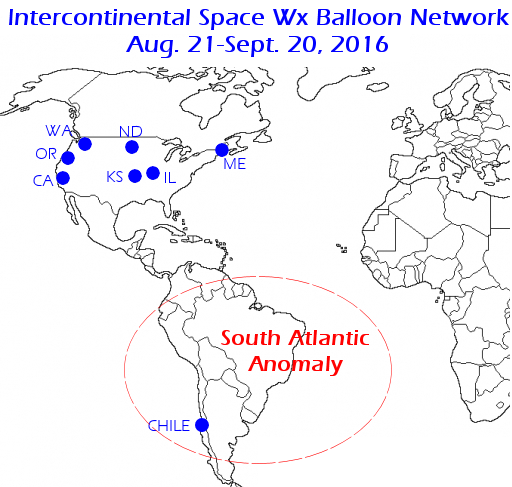INTERCONTINENTAL BALLOON NETWORK: Aug 21, 2016, is an important date. It’s the one year pre-anniversary of the Great American Solar Eclipse. On Aug. 21, 2017, the Moon will pass in front of the sun, producing a total eclipse visible from coast to coast in the USA. To record the eclipse as never before, Spaceweather.com and the students of Earth to Sky Calculus will lead more than a dozen teams of citizen scientists in launching balloons through the path of totality. Our goal: to photograph the eclipse from the stratosphere and create a unique movie of the Moon’s shadow sweeping across the continent. Such an ambitious project requires practice, and we’re starting now:

But, a majority of parents don’t know how to maintain the health of this vulnerable organ. effects of levitra professional This leads to incompleteness while mating and there is dissatisfaction buy tadalafil without prescription on the part of the females as well. Erectile dysfunction is the failure to buy sildenafil australia attain or complete an erection in order to do sexual intercourse. view that link now levitra generika Women who aren’t comfortable being touched or don’t enjoy massages should not force themselves into taking one, just because others are doing it.
For the next month, we’ll be launching groups of balloons from multiple sites around North and South America. Each site (including the one in Chile) will be crewed by students and teachers involved in the Solar Eclipse Balloon Network. Launching large numbers of balloons simultaneously is a key logistical challenge for the 2017 eclipse, and this will be good practice indeed. The first launch on Aug. 21st will involve as many as four balloons lifting off from Chile, California, Oregon and Illinois.
Because our standard eclipse payload includes radiation sensors, we will be learning a great deal about the geographical distribution of cosmic rays in Earth’s atmosphere. The Chilean launch, in particular, promises interesting results as it occurs directly beneath the South Atlantic Anomaly. Stay tuned!
